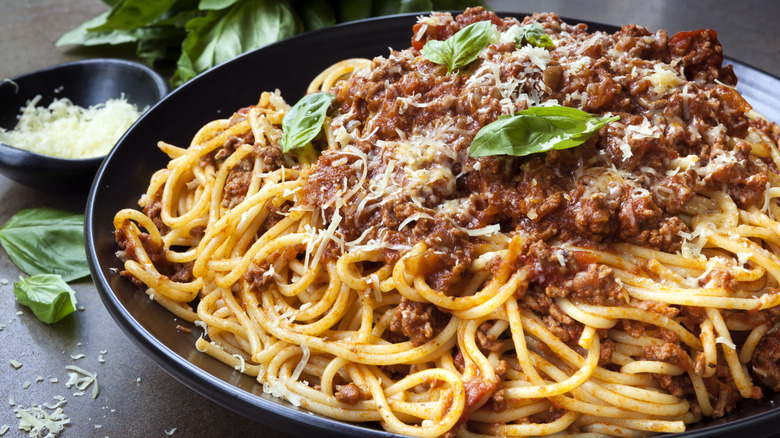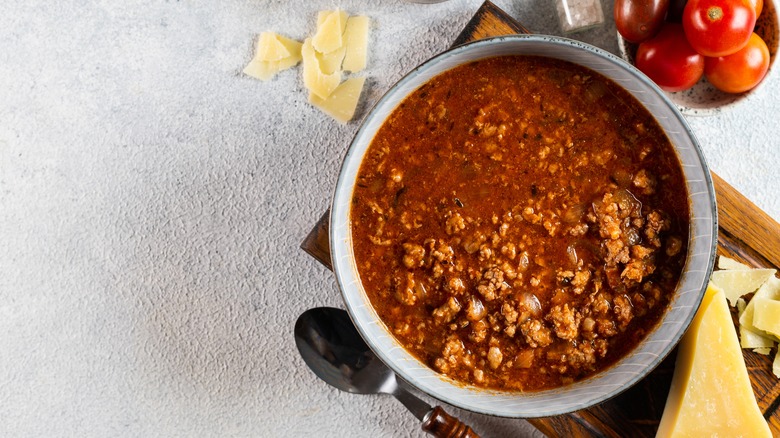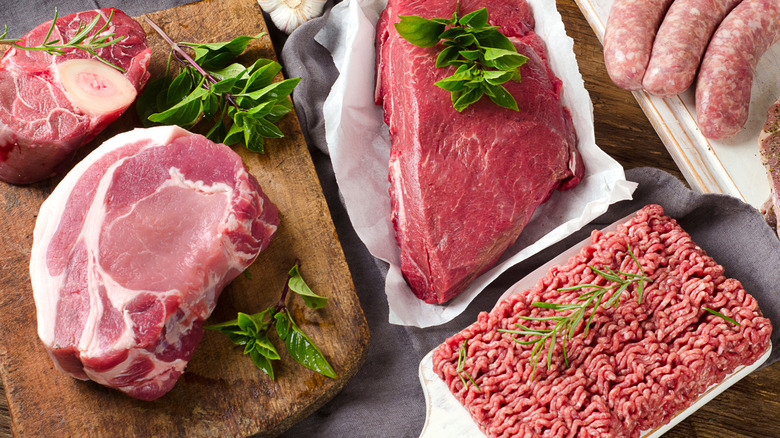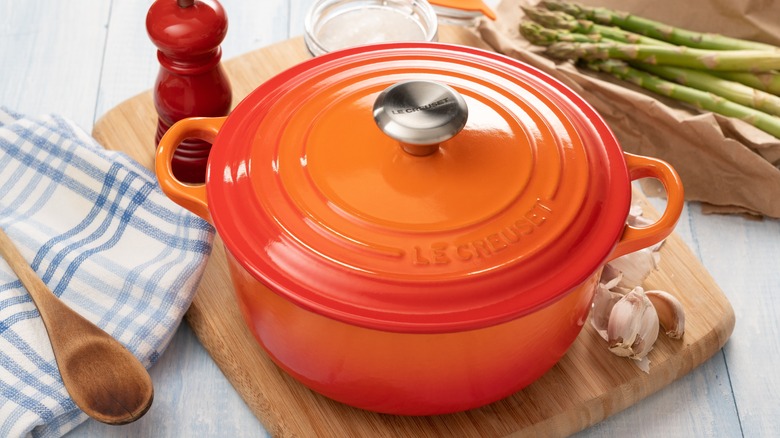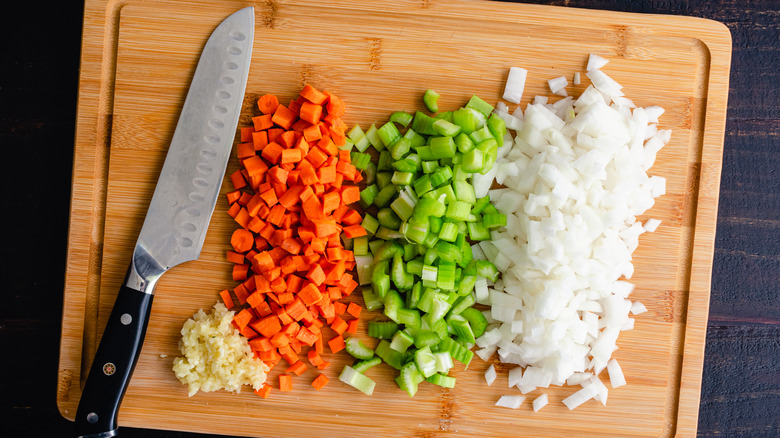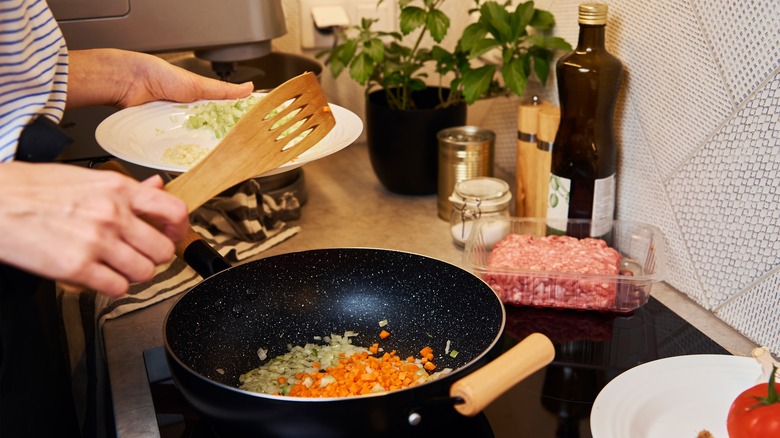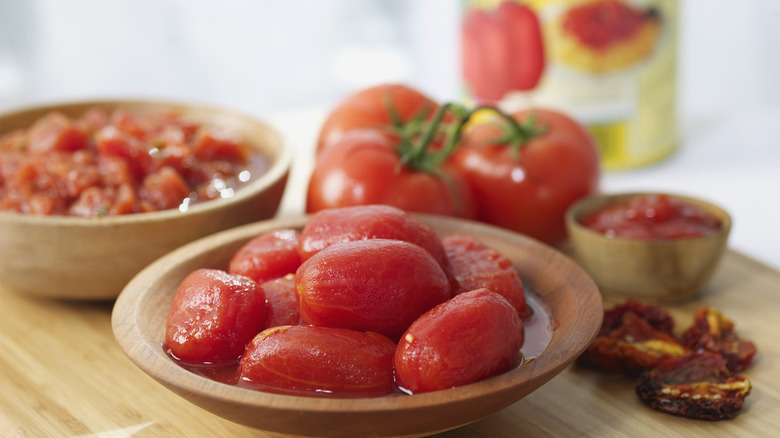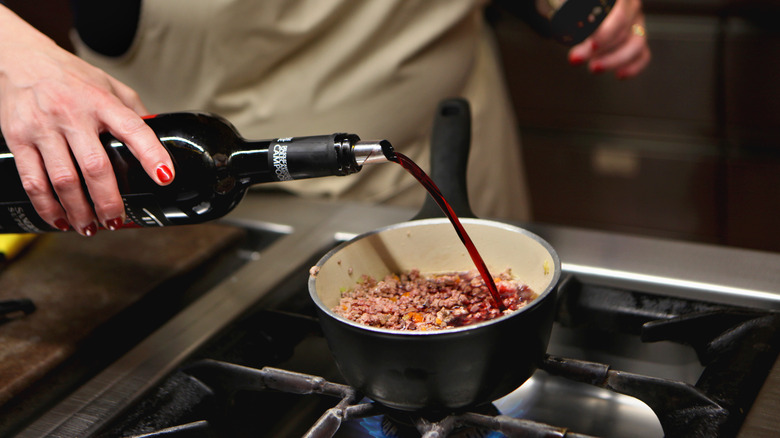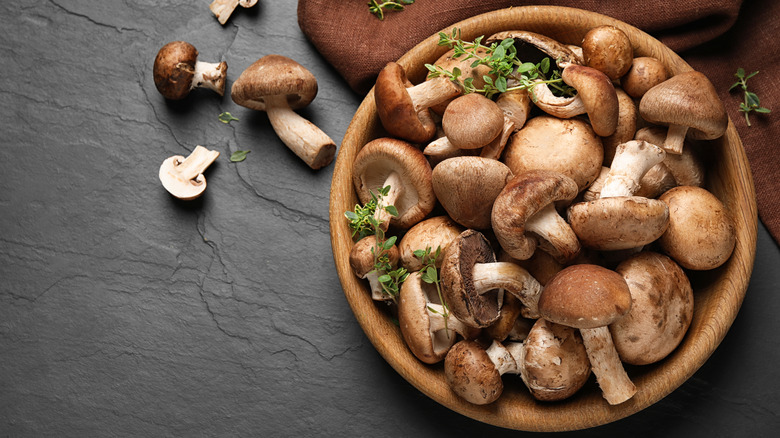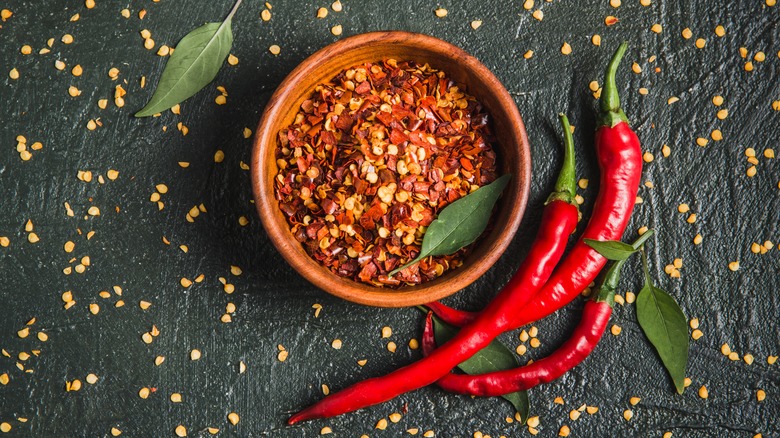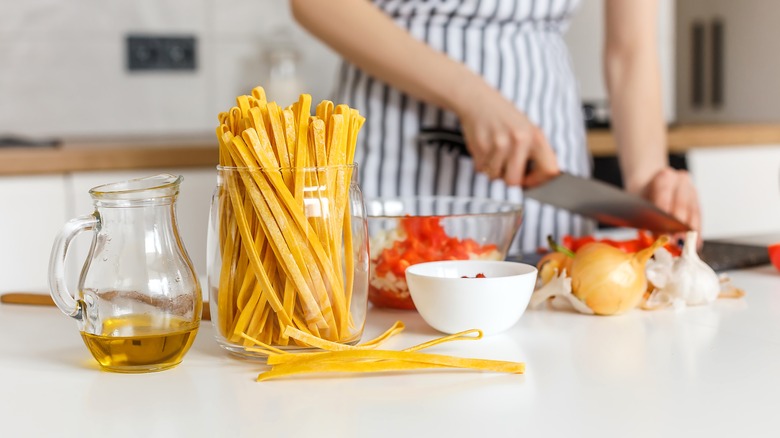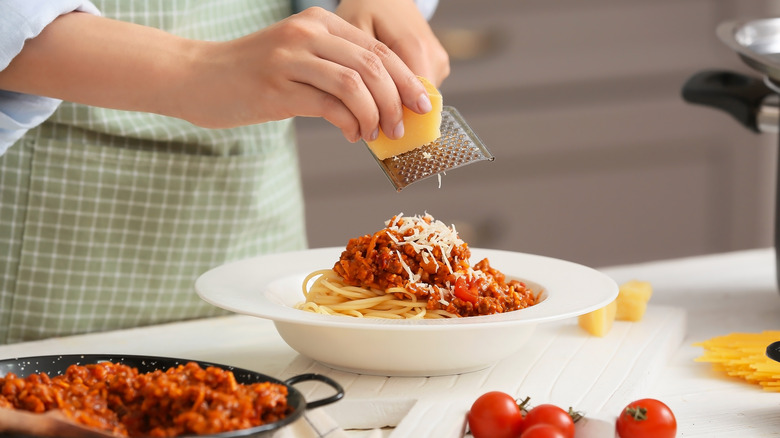14 Tips You Need When Making Bolognese Sauce
Italy is renowned for some of the best food in the world, from silky risotto and crisp fritto misto to cured meats and fresh, tender pasta. Interpretations of classic Italian cuisine are beloved around the world, including a versatile, meaty tomato sauce often layered into hearty lasagna or poured over spaghetti for an easy, weeknight dinner. However, the beloved spaghetti and meat sauce often found on tables in the United States is a far cry from its predecessor, the rich, tender, and complex ragù alla Bolognese.
Are ragù and Bolognese the same thing? Ragù refers to a number of meat-based Italian sauces that are typically built from a soffritto of carrots, celery, and onions with meat and tomato that is cooked over low heat for a long period of time. Bolognese is a type of ragù that hails from the Northern Italian city of Bologna in the region of Emilia Romagna and is one of many variations of ragù enjoyed across the country. This surprisingly simple sauce rewards attentive cooks with a decadent and satisfying result that instantly upgrades pasta, lasagna, and more. A few easy steps elevate the average meat and tomato sauce with richness and depth that would make any Italian nonna proud. Take pasta night to the next level with these tips you need when making Bolognese sauce.
1. Be patient with it
Patience is essential when it comes to making great ragù alla Bolognese. This rich, meaty sauce gets its coveted depth from infusing care and attention to detail into each step of the process followed by a gentle, lengthy simmer. From ensuring evenly cut vegetables and delicately browning the meat to gently reducing the stock while attentively monitoring the pot, the dish requires hours of dedication to achieve the decadent textures and layers of flavor signature of a true Bolognese. If you can stand to wait, consider preparing the sauce a day or two in advance of when you plan to eat it, providing plenty of time for the flavors to melt into one another.
Despite many attempts by home cooks, manufacturers, and even professional chefs at a quicker version of the iconic sauce, there are no shortcuts that will yield the rich, developed flavors of a tenderly nurtured Bolognese. It is so much more than ground meat mixed with a jar of tomato sauce scooped over spaghetti. The quintessential Italian dish has dozens of regional variations across the country that differ on almost every element from the type of meat to use to the inclusion of wine or dairy, and even what to serve with the sauce (via The Washington Post). However, the one thing that all Italians seem to agree on when it comes to the thick, meaty ragù is that it takes time to create the satisfying complexity of this renowned sauce.
2. Choose meat purposefully
The type of meat you choose to make your Bolognese will likely have one of the largest impacts when it comes to both the texture and taste of the final product. Many versions use ground meats although some cooks may choose to chop the meat into small chunks or a combination of the two. A traditional Italian ragù typically includes two or three types of meat with the most classic for Bolognese being a mixture of beef and pork. Sometimes pancetta, lamb, or veal are added or swapped to round out the texture.
No matter which meats you choose, they should be high quality and carry some fat. La Cucina Italiana recommends avoiding lean cuts of meat that lack enough fat to infuse flavor and protect the sauce from drying out. If you will be cutting or grinding the meat yourself, go with chuck or flank steak for beef and fatty pieces of pork such as the thigh. Whether opting for a traditional version or getting creative with your meat mixture, select your meat with purpose and care.
3. Use a large pot
Because Bolognese requires a long, slow simmer, it is important to have a large enough pot to hold all the ingredients as they gently reduce into a rich, hearty sauce. It will need to have enough room to hold the meat, vegetables, and liquids until they have time to meld and condense. A heavy-bottomed pot such as a sturdy Dutch oven, stainless steel stockpot, or earthenware pot can cook for hours without scorching the contents in the bottom of the dish (via Cucina Rustica).
In addition to protecting the bottom of the sauce while it cooks, a large pot allows plenty of room for even browning on your meat and vegetables. These ingredients could be prepared separately in two different pans or cooked one at a time in the pot, then recombined when you are ready to add the broth and tomatoes. A large pan will continue to spread the heat evenly throughout the lengthy cooking process. For dishes like Bolognese that require careful browning and a long, delicate cook, you might also consider opting for a large pot with a light interior color. Pans with a lighter interior make it easier to accurately gauge browning while also providing less intense heat than darker pans.
4. Chop vegetables evenly
Knife skills are foundational to preparing a quality dish whether you are a home cook or a professional chef. Sliced, diced, or julienned, the type and size of the cut can actually affect both the taste and texture of the dish. NPR recruited culinary experts to explain how different knife cuts can change the flavor and feel of your food. For example, increasing the surface area by finely cutting a vegetable exposes more of the ingredient to the cooking method and allows for them to mingle with other components such as fat or seasonings. The cut will affect the cook time and texture of the dish as well while different types of produce have unique reactions and are better suited for certain cuts.
When preparing a Bolognese, a mince or small dice is recommended to prepare the vegetables that make up the soffritto — typically carrot, celery, and onion. This fine cut offers precision and consistency for even cooking and allows the vegetables to easily meld into the sauce as it reduces. Most of the knife work should be done during a step professional chefs know as mise en place, a French term meaning "everything in its place." Chef Anne Burrell encourages home cooks to adopt this practice to help streamline processes and reduce stress in the kitchen. This tip is especially advantageous when preparing dishes that have many steps or layers such as traditional Bolognese.
5. Build depth with layers
Perhaps the most distinctive difference between a proper ragù and the average meat and tomato sauce is the multi-dimensional depth of flavor that results from carefully adding each layer in the right way and at the right time. Hasty cooks might be tempted to throw all the ingredients in the pot and hope for the best as it simmers away, but each step has a purpose and contributes to the texture and taste of the final dish.
Begin building flavor by caramelizing the meat with medium to low heat to gradually bring out the richness without making the meat tough or dry. Set the browned meat aside, then deglaze the pan with a splash of wine before adding the evenly chopped soffritto, allowing the vegetables to brown slowly over low heat, releasing their aromas. Because salt extracts water from food, season the vegetables after they have browned to reduce the risk of burning them (via Salt Sear Savor). Also, keep in mind that the seasoning will intensify as the sauce condenses and you should be careful not to overdo it. Once these base layers are established, broth, wine, tomatoes, and other ingredients are added to further enhance the flavor as the sauce begins to reduce.
6. Use the right tomatoes
Tomatoes play a unique role in Bolognese, bringing brightness and acidity to counteract the fatty richness of the meat. Not all tomatoes taste or feel the same, however, with some varieties better suited to melding into the slow-cooked sauce. L'amore Italian Restaurant suggests that when making homemade tomato sauce, Roma and other paste tomatoes that have a meaty texture with few or no seeds are the best choices, such as San Marzano and similar varieties. These tomatoes are excellent for marinara, arrabbiata, or puttanesca, but when it comes to Bolognese, many cooks skip the fresh tomatoes altogether as they can be too watery and affect the texture and taste of the finished dish.
When it comes to ragù, most recipes call for a more concentrated product such as tomato puree or paste rather than whole tomatoes to avoid watering down the flavor intensity of the dish (via La Cucina Italiana). Unlike other pasta sauces that feature tomatoes, the ingredient is not central to the dish and their presence is optional in many varieties.
7. Balance your sauce with sugar
Le Cordon Bleu describes balancing flavor as both a science and an art that can elevate the dining experience. In order to build a harmonious dish, balance must be maintained across the five taste elements: sweet, salty, sour, bitter, and umami. Cook Smarts explains that each element might enhance or counteract another, such as sweet and salty or spicy and sour.
The main ingredients in Bolognese lean heavily toward salty and savory with the addition of tomatoes bringing acidic sour notes as well. These flavor profiles can be easily balanced by stirring in a little bit of sweetness. Similarly, a pinch of sugar can bring balance to fresh or jarred tomato sauces and even chili by mellowing out the acid or heat while expanding the flavor profile of the dish. When adding flavor elements to a dish, it is important to taste and adjust as you go in order to achieve flavor harmony.
8. Stir in some dairy
By the late 18th century, professor Thomas Gwinner explains that ragù had begun to evolve from the French stewed ragout into the heart of Italian cuisine as new variations with new ingredients spread across the country (via International Journal of Arts and Humanities). By 1891, the first documented recipe appeared in a cookbook by Pelligrino Artusi. Artusi's version of the slow-cooked meat stew included only a dozen ingredients, notably Parmesan cheese and optional cream. The tradition of including dairy such as milk, cream, or Parmesan carries on in the recipes of renowned Italian chefs from Chopped judge and restaurateur Scott Conant to culinary icon Lidia Bastianich.
According to La Cucina Italiana, milk is essential to ragù, especially in the style of Bologna, and should be added little by little toward the end of cooking, mixing with the meat until the milk is completely absorbed into the dish. Milk adds a rich, creamy element that may aid in tenderizing the meat while lending yet another layer of flavor to the sauce. Save your Parmesan rinds to cook with Bolognese as well. It will add a rich, nutty note to your ragù.
9. Pour a splash of wine
Throughout its long history, Bolognese has sparked many heated debates, from which meats belong in the dish to its origin story. One such argument is whether to use white or red wine to create the best version of this treasured dish. Traditionally, Italians use white wine in Bolognese rather than red to avoid overpowering the subtle complexities of the sauce. Ina Garten, however, advocates for two acidic punches of bold red wine to elevate a Bolognese. While both sides have their stances, Flight Wine Bar explains that the decision should rely mostly on when you are serving the sauce. Red wine can be aggressive, which can work to your benefit if you are making the sauce in advance, giving the wine time to meld with the other ingredients. If you plan to enjoy your Bolognese that evening, however, white is suggested instead so as to not overpower the nuance of the dish.
Whether you choose white or red, including wine in your Bolognese can enhance the flavor profile while balancing the heaviness of the meat and dairy. You can use it to deglaze the pan and add a touch of acid to the dish, which also may assist in tenderizing the meat and provide some contrast to the rich ingredients.
10. Mix in some mushrooms
Although less common in modern Bolognese recipes, Pelligrino Artusi actually included a suggestion to add dried mushrooms in the first documented version of the classic ragù (via International Journal of Arts and Humanities). Bringing a dose of umami along with textural interest to the dish, mushrooms offer even more depth of flavor as well as an easy way to bulk up the dish without putting in more meat.
While traditional versions often relied on whichever meats were available, rising food costs can limit accessibility to even the less desirable cuts of pork or beef. In addition to their nutritional value, mushrooms are an excellent way to stretch the meat in your sauce with a lower-cost filler that still packs plenty of flavor. Though certainly not traditional, vegetarians may also employ mushrooms along with some legumes such as lentils for a meat-free version of the Italian staple sauce. Scientific American notes that reducing meat consumption has a number of benefits for the environment such as using less water and fertilizer, improving biodiversity, and slowing deforestation. Even if you don't want to cut out the meat completely, swapping mushrooms for half of the beef in your Bolognese can benefit both your wallet and the planet.
11. Up the umami with fish
Umami is an enigmatic flavor the Japanese describe as a "pleasant savory taste," according to MasterClass. Ingredients that are rich in umami, such as fish sauce or anchovies, can level up tomato sauces from classic marinara to hearty Bolognese. The savory addition offers further complexity and depth to the traditional version of the dish.
Today spoke with experts in the worlds of culinary and sensory to explore the role of umami in a dish. Nancy Rawson of Monell Chemical Senses Center described the elusive taste as bringing a deeper flavor with a sense of fullness to the food. Umami-rich ingredients interact with other flavors to bring out certain characteristics in the dish. Detecting the amino acid glutamate sparks the perception of this savory, meaty note, explains food scientist Alissa Nolden. Although often associated with Asian cuisines, many ingredients from around the world are rich in umami flavor, such as shiitake mushrooms, miso, anchovies, seaweed, and hard cheeses such as Parmesan.
12. Turn up the heat
As a classic dish makes its way around the globe, new ingredients and techniques can inspire thrilling interpretations that bring renewed excitement to a dish. Simply swapping an ingredient or two or perhaps adding a unique element can reinvigorate a traditional dish for the modern era. Although not typically known for ingredients that bring the heat, Italians are no strangers when it comes to spice. Bold red pepper flakes will have you sweating while enjoying a plate of spicy arrabbiata and fiery Calabrian chiles add a uniquely potent heat to sausage, pizza, and even honey.
Elevate your Bolognese with a touch of heat that offers a bright contrast to the savory richness of the traditional version. Simply sprinkle a few red pepper flakes to raise the heat level of the dish or try mixing in some spiced meats in addition to or in place of the typical pork or beef. Food writer and television personality Donal Skehan includes spicy 'nduja sausage in his meat sauce. You could also swap in vibrant chorizo to get that fiery bite or try spicy Italian sausage for a less intense heat.
13. Don't serve it with spaghetti
After hours of waiting and diligently attending to your Bolognese as it gently reduces into a luxurious pot of meaty richness, it is time to enjoy the result of your labor. While Americans might first reach for the box of spaghetti, there are many delightful ways to savor your luscious sauce. Considered a tourist food in Italy, spaghetti Bolognese is actually an American creation likely brought into existence by Italian immigrants in the early to mid-20th century. In fact, the Mayor of Bologna called out spaghetti Bolognese for its inauthenticity as Northern Italians typically enjoy their ragù with a fresh, flat pasta such as tagliatelle or pappardelle, which stands up better to the thick sauce (via CBC News). While fresh pasta brings a softer, richer texture from the inclusion of eggs, dried pasta typically has a rougher surface for the sauce to adhere to and offers an al dente bite that contrasts nicely with the tender meat. Either fresh or dried, these wider, flat kinds of pasta are ideal for clinging to thick sauces like Bolognese.
Beyond a classic bowl of pasta ragù, Bolognese makes a decadent addition to baked ziti, fluffy gnocchi, stuffed tortellini, creamy polenta, and hearty, layered lasagna. Next time you prepare a traditional Bolognese, skip the spaghetti and try one of these delicious options instead.
14. Make it your own
Traditional recipes have withstood the test of time for good reason. Fine-tuned over the years, certain dishes have become comforting classics often steeped in family memories, serving as a way to connect to your heritage, or offering a deeper understanding of other cultures. Once you understand the history and foundations of a dish, you can begin to experiment, giving the original version a personalized touch.
Whether out of necessity or creativity, food continues to evolve thanks to the innovation and ingenuity of home cooks and culinary professionals who continue to explore the boundaries of what is possible for a dish. Find your own favorite variations of Bolognese by experimenting with unexpected combinations of meats, adding a new vegetable, raising the spice level, or even opting to create a vegan alternative as you put your own signature twist on this iconic sauce.
